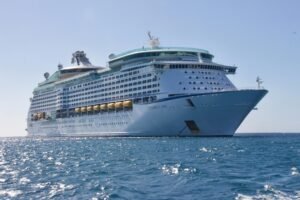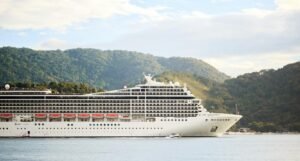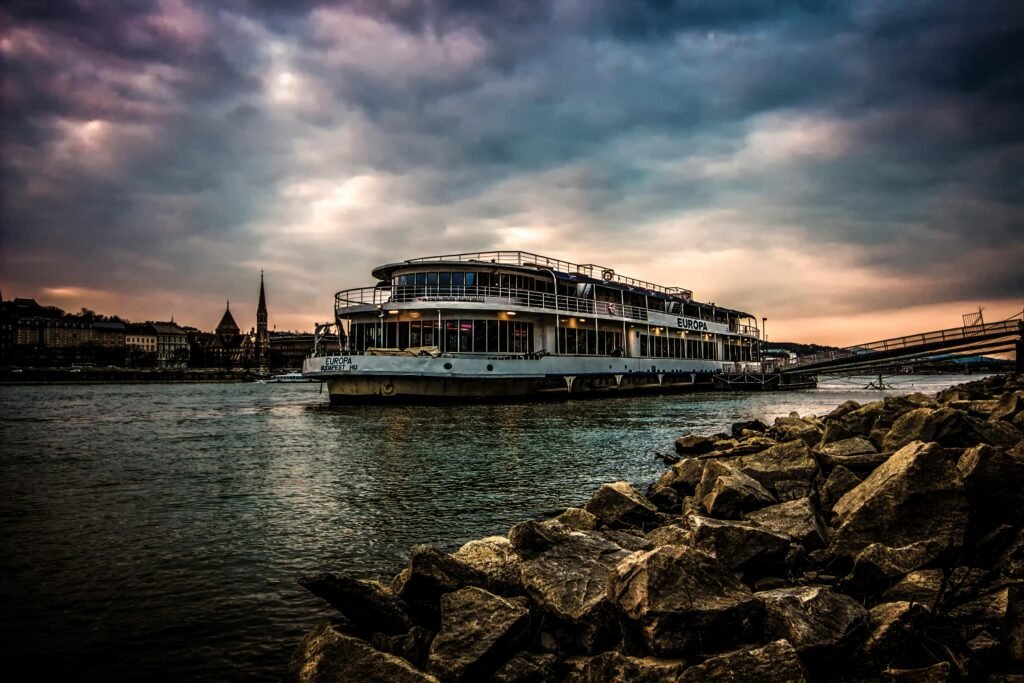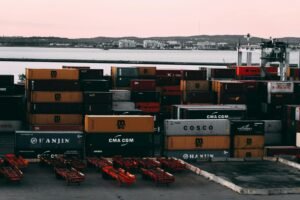Track Cruise Ships on Google Earth
The voyage industry has gotten to be more open than ever, with millions of individuals from the UK and USA arranging get-aways at ocean. For travelers, oceanic devotees, and analysts alike, one of the foremost common questions in 2026 is whether journey ships can be followed in genuine time on Google Earth. With cutting edge satellite technology and coordinates apparatuses, the method has gotten to be easier than numerous accept. This direct clarifies everything you wish to know about following cruise ships on Google Earth, how it works, its restrictions, and the finest choices to urge the foremost precise data.
Why Track Cruise Ships on Google Earth in 2026
Voyage ships work like drifting cities. They carry thousands of travelers, utilize expansive teams, and visit ports over the world. Knowing where a transport is at any given time is valuable for travelers arranging a occasion, companions and families holding up for overhauls, and oceanic watchers interested by the scale of worldwide voyage operations.
Following ships on Google Earth combines the visual clarity of satellite imagery with information overlays that can appear surmised positions. Whereas Google Earth does not work as a committed vessel following stage, it can still give a one of a kind see of oceanic development when combined with the proper information sources.
Can You Track Cruise Ships in Real Time on Google Earth
The brief reply is both yes and no. Google Earth alone does not give live vessel following by default. In any case, it can show near-real-time information when combined with third-party oceanic following administrations that supply KML or KMZ records. These records can be stacked into Google Earth to overlay the ways and positions of ships over seas.
For illustration, websites like MarineTraffic or VesselFinder offer downloadable records or integration choices that permit users to see live transport information inside Google Earth. Once associated, the application upgrades habitually sufficient to grant a close-to-live tracking experience.
It is vital to get it that Google Earth’s satellite imagery itself isn’t overhauled in genuine time. Instep, it depends on coordinates AIS (Programmed Distinguishing proof Framework) information from vessels. This implies you’ll see where a voyage dispatch is found on the outline, but the foundation symbolism may not coordinate the current climate or time of day.
How Cruise Ship Tracking Works
Voyage ships are required to carry AIS transponders that broadcast their area, speed, and heading. These signals are picked up by satellites and coastal collectors, which at that point nourish into global tracking systems. When coordinates with Google Earth, this AIS information gets to be unmistakable within the shape of moving markers on the outline.
The AIS framework guarantees that transport areas are freely accessible for security, security, and operational straightforwardness. It is this information that produces voyage transport following conceivable for both experts and the common open.
Steps to Track Cruise Ships on Google Earth
To form the method basic, here is how it ordinarily works in 2026:
To begin with, download and introduce Google Earth on your device. The application is accessible for desktop, web, and mobile. After establishment, visit a transport following site that provides Google Earth integration. A few stages give coordinate KML record downloads, whereas others offer subscription-based access for improved features.

Another, open Google Earth and import the downloaded file. Once loaded, you may see markers speaking to journey ships on the outline. By clicking on a marker, you can see points of interest such as dispatch title, speed, goal, and last reported position.
At long last, keep the application upgraded by reviving the information occasionally. This guarantees you’ve got the foremost current transport positions accessible. Whereas it may not be correct to the moment, the information is by and large precise inside a couple of minutes.
Benefits of Using Google Earth for Cruise Ship Tracking
One of the greatest points of interest of Google Earth is its visual representation of the world. Not at all like plain tracking maps, Google Earth permits you to zoom in on the seas, ports, and coastlines to see the geology encompassing a ship’s area. Typically particularly valuable for those inquisitive approximately where voyage ships are cruising relative to points of interest, islands, or major ports.
Another advantage is availability. Google Earth is free to utilize, and its integration with oceanic following devices does not require progressed specialized abilities. Travelers, families, and devotees can all utilize it with ease.
Moreover, it bolsters customization. You’ll add layers, spare courses, or indeed combine transport following with climate overlays to induce a more full picture of sea conditions. This level of flexibility makes it more engaging compared to standard vessel-tracking websites.
Limitations to Be Aware Of
In spite of its usefulness, Google Earth isn’t perfect for journey transport following. Its biggest limitation is the need of local real-time upgrades. Clients must depend on outside information suppliers, which may not continuously offer total scope.
There’s too a delay in AIS signals, which suggests transport areas might not be flawlessly up-to-date. Whereas this delay is regularly as it were a couple of minutes, it can matter on the off chance that you’re attempting to take after a ship’s correct entry time.
Another confinement is that not all voyage ships are always visible. A few vessels may incidentally impair their AIS transponders due to controls, specialized issues, or security reasons. This could lead to crevices in following.
At last, Google Earth requires web network to upgrade following layers. Offline utilize is restricted to inactive symbolism without live vessel information.
Alternatives to Google Earth for Cruise Ship Tracking
For those who need more coordinate following arrangements, a few devoted stages exist. MarineTraffic, VesselFinder, and ShipFinder are among the foremost prevalent. These administrations give intelligently maps with near-instant overhauls, and they frequently incorporate extra highlights such as cruise schedules, port data, and armada records.
Versatile apps are moreover broadly accessible, making it simple to track ships on the go. For occurrence, MarineTraffic’s portable app permits users to hunt for particular voyage ships and get notices when they approach a harbour.
Another alternative is journey line websites themselves. Numerous voyage administrators give official tracking for their ships, allowing passengers and families to know precisely where a vessel is at any time. While not as visually dynamic as Google Earth, these stages are frequently the most precise.
Tracking Cruise Ships for Travel Planning
For travelers within the UK and USA arranging travels in 2026, transport following can be greatly commonsense. By observing transport developments, travelers can check whether their vessel has arrived in harbour, affirm flight plans, and remain educated almost schedule changes.
Families holding up for cherished ones on board can too utilize transport following to know when to anticipate entry overhauls. This decreases vulnerability and gives peace of intellect.
In expansion, devotees who appreciate taking after oceanic activity can utilize following devices as a side interest. Observing journey ships explore the Panama Canal, cruise through the Mediterranean, or dock in Caribbean ports gives a intriguing understanding into worldwide tourism.

Security and Safety Aspects
The utilize of AIS and Google Earth moreover ties into security. Transport following progresses oceanic security by making vessel developments straightforward. Specialists, coast watches, and universal controllers depend on AIS information to screen activity, avoid collisions, and react to crises.
For travelers, this straightforwardness guarantees that voyage ships keep up secure and directed courses. It too gives consolation that vessel positions are always checked, indeed when traveling distant from arrive.
Integration with Emerging Technology in 2026
Innovation has kept on progress in 2026, and transport following is advancing nearby it. With quicker satellites, improved AIS scope, and AI-driven analytics, information precision has never been higher.
Google Earth has moreover gotten to be more intelligently, with progressed bolster for real-time information layers. This implies clients can expect more consistent integration when following voyage ships within the a long time ahead.
In expansion, virtual reality and expanded reality are starting to combine with oceanic mapping. Before long, clients may be able to track ships not fair on level maps, but through immersive 3D encounters.
Final Thoughts
Following journey ships on Google Earth in 2026 is conceivable, but it requires the utilize of AIS information from external suppliers. Whereas not as exact as committed following apps, it offers a outwardly wealthy and customizable way to take after sea activity.
For travelers, it gives consolation and viable data. For devotees, it conveys a intriguing point of view on worldwide shipping courses. And for experts, it contributes to security and mindfulness.
The innovation will as it were progress within the a long time to come. With more progressed integration and satellite coverage, Google Earth may before long offer indeed smoother following encounters. Until at that point, combining Google Earth with trusted AIS suppliers remains the finest method for taking after journey ships in genuine time.
Whether you’re arranging a occasion, holding up for family at ocean, or essentially inquisitive approximately sea operations, this direct has appeared you how Google Earth can make journey transport following simple, engaging, and instructive in 2026.
Common Questions About Cruise Ship Tracking on Google Earth
Can Google Earth appear correct journey dispatch positions right presently?
Yes, but as it were with outside AIS information sources. Google Earth does not track ships alone.
Is it free to track voyage ships on Google Earth?
Google Earth itself is free, but a few AIS suppliers may charge for premium highlights.
Can I track journey ships on portable utilizing Google Earth?
Yes. The Google Earth versatile app underpins KML layers and can appear AIS information in the event that legitimately coordinates.
Why can’t I discover a particular voyage transport on Google Earth?
This could happen on the off chance that the ship’s AIS transponder is turned off, or in the event that the information supplier does not have scope for that region.
Which elective is most dependable for real-time voyage ship tracking?
Marine Traffic and Vessel Finder are considered the foremost exact for real-time following, whereas voyage line websites give the foremost solid official upgrades.




